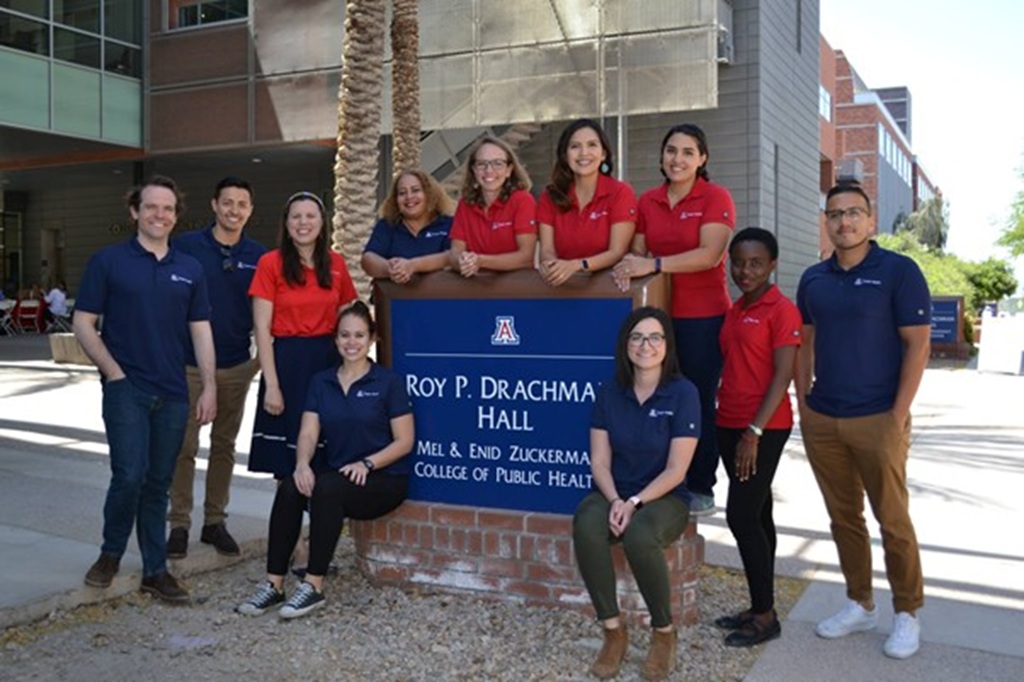
Rising global temperatures, toxic exposures, air and water pollution, and the spread of emerging infectious diseases are no longer distant threats — they are urgent realities. According to the World Health Organization, an estimated 24% of global deaths are linked to the environment, with low- and middle-income countries bearing the heaviest burden. In the US, environmental factors are increasingly recognised as critical determinants of public health, influencing everything from respiratory illnesses to reproductive outcomes and cancer rates.
Against this backdrop, the need for trained professionals who can bridge science, policy, and action has never been greater. A graduate degree in Environmental Health prepares graduates to do exactly that — by equipping them with the skills to identify risks, develop interventions, and advocate for sustainable, equitable solutions. If that’s what you’re looking for, these are the universities to consider.

Texas A&M University’s Master of Public Health in Environmental Health degree can be completed in-person or online. Source: Texas A&M University
Texas A&M University
There are many reasons why students pursue a master’s degree — but for Texas A&M University graduate Peyton Lindsay, it was deeply personal. “Watching my dad with his lifelong struggle with multiple autoimmune diseases inspired me to pursue my MPH in environmental health, which trains you to look at all aspects of an individual’s environment in considering their health and well-being,” she says.
Lindsay found the ideal fit in Texas A&M’s Environmental and Occupational Health department, which offers a Master of Public Health (MPH) in Environmental Health degree. This programme that revolves around advancing public health solutions by identifying and mitigating hazards through research, regulatory enforcement, public education, and policy development. Require flexibility? The MPH in Environmental Health Online offers a fully customisable format if you’re a US citizen or permanent resident. Learn on your schedule, from anywhere in the world, without compromising on the depth or quality of the education.
Beyond its rigorous curriculum, the programme fosters a vibrant, supportive community. Learners from around the globe come together with a shared mission: to reduce the impact of human activity on the environment. Whether through study groups, networking events, or collaborative projects, you’ll build lasting professional relationships that strengthen your career journey.
You’ll also gain lifelong membership to the Association of Former Students of Texas A&M University, or Aggie Network for short. It offers valuable insights into the professional world and provides career support long after graduation. For more targeted industry connections, the department’s Industry Advisory Board, which advises on course topics, links you with leading employers and offers opportunities for mentorship, internships, and jobs. A dedicated career advisor is also available to guide you through your career planning and placement.
Apply to the in-person or online MPH in Environmental Health at Texas A&M University now.

The MPH Environmental and Occupational Health degree at the University of Arizona is divided into two tracks: Environmental and Occupational Health and Industrial Hygiene. Source: University of Arizona
The University of Arizona
The Department of Community, Environment & Policy at the University of Arizona is where you will find the MPH Environmental and Occupational Health. The programme provides comprehensive knowledge of chemical, physical, and biological sources of health standards to ensure we live in a safe and healthy environment. The degree is divided into two tracks: Environmental and Occupational Health and Industrial Hygiene, both of which offer specialised training in the recognition, evaluation, and control of health hazards.
Whichever track you choose, you will get to hone your practical skills — all students are required to complete both a field-based internship and a research project, supervised by world-class faculty. These educators have expertise in occupational safety, toxicology, occupational medicine, ergonomics, epidemiology, microbiology, environmental science, environmental modelling and engineering, exposure, and risk assessment.
The university’s International Student Services allows you to engage with peers from different parts of the world. The International Friends organisation, formed by Tucson community members, provides opportunities for you to make acquaintances and learn about other students’ cultures. This is also where you can get all your information, whether about your studies, working in the country, or anything else you will need as an international student.

The MPH at Indiana University Bloomington offers four concentrations for you to choose from. Source: Indiana University School of Public Health-Bloomington
Indiana University Bloomington
As a student of the Indiana University School of Public Health–Bloomington, you will be surrounded by people who care about changing the world just as much as you do. This community of aspiring health professionals, along with an outstanding faculty, work hand-in-hand to make a difference by improving the health and lives of people in Indiana, the US and beyond. They assess and ensure the safety of working conditions, water, food, and air quality. Some even work to promote sustainable societies and the benefits of green spaces.
Such activities are common at the Department of Environmental and Occupational Health. Here, you will have the opportunity to work on impactful scientific research and go through academic training to identify, understand, and prevent environmentally-related diseases and enhance the quality of people’s lives. With guidance from experts and access to world-class laboratories, you will gain a learning experience like no other.
The department offers two master’s degrees, one of which is the MPH with an Environmental Health concentration. Students on this route learn how to measure and control harmful exposures in the environment and workplaces, understand how these exposures affect health, study toxicology, and apply related laws. There are four concentrations they can choose: Behavioural, Social, and Community Health, Public Health Administration, Physical Activity, and Epidemiology.
*Some of the institutions featured in this article are commercial partners of Study International










